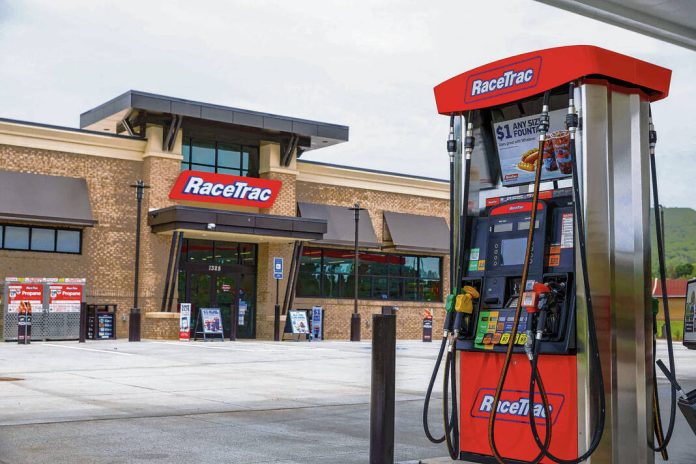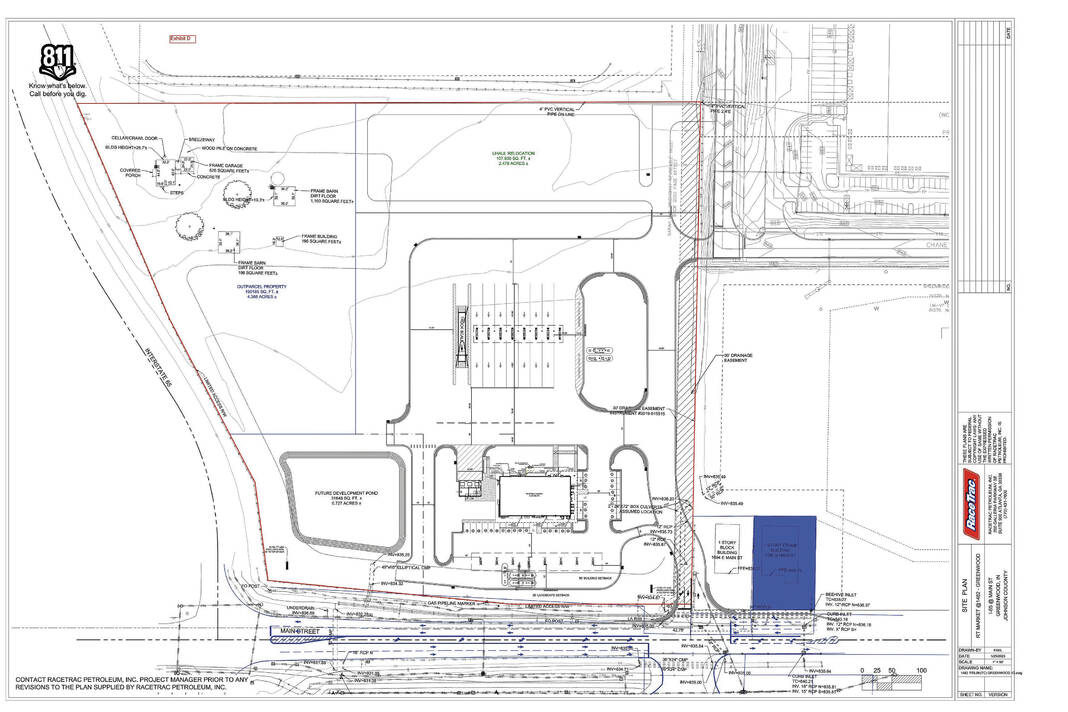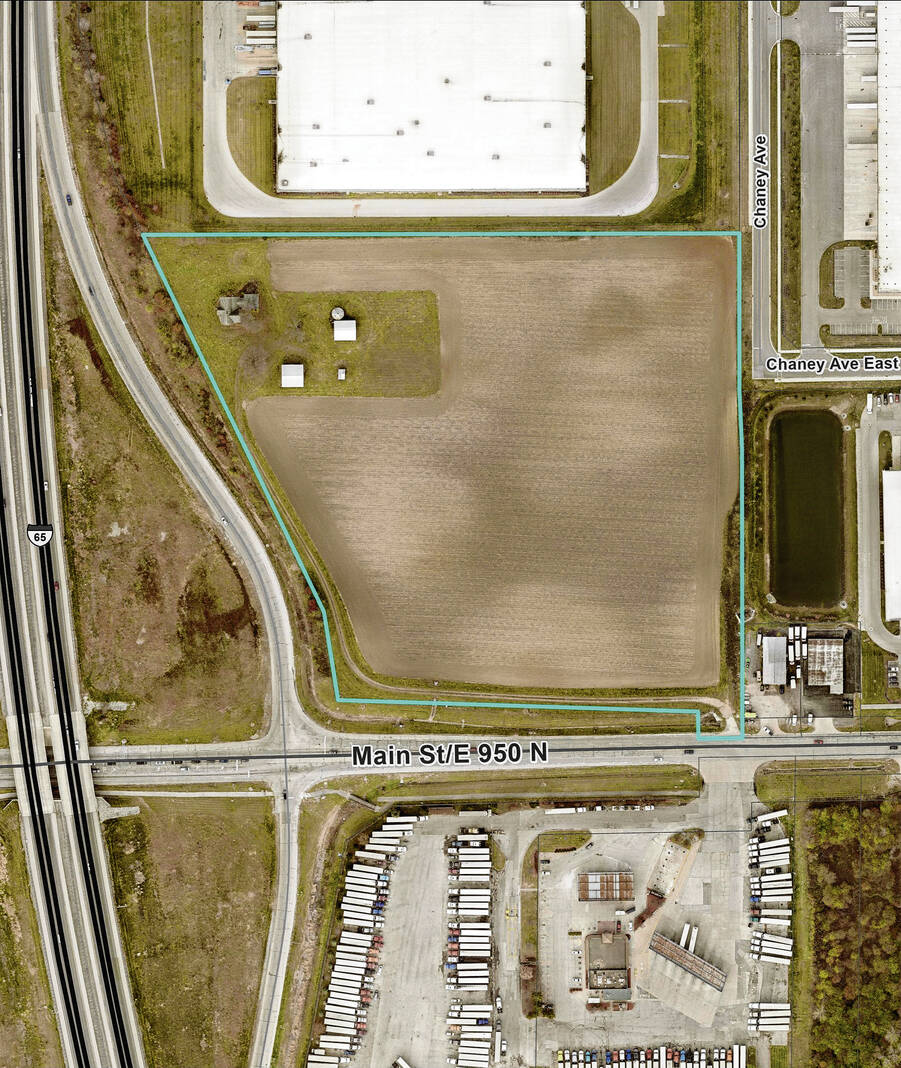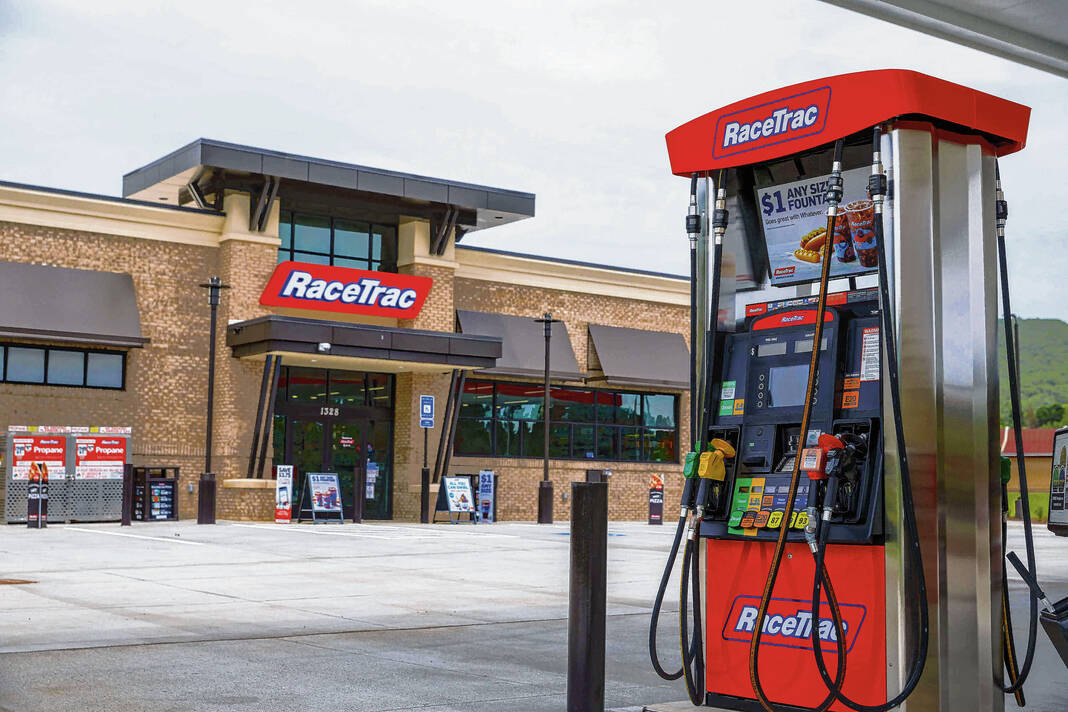A variance that would’ve allowed for a proposed gas station near the Main Street interstate interchange was rejected in a split vote by a Greenwood board Monday.
The Greenwood Board of Zoning Appeals voted 3-2 to reject a request from Atlanta-based RaceTrac to allow for a commercial planned unit development of less than 20 acres on a property located at the northeast corner of the Main Street Interstate 65 interchange. Members Josh King and Vickie Peters voted against rejecting it.
RaceTrac, a chain of gas stations and convenience stores, wants to build a gas station on about 16 acres of land zoned industrial medium on the northeast corner of the interchange. Gas stations are currently only allowed under commercial medium and large zoning.
Monday night’s BZA meeting was not the first time RaceTrac has come before the board asking to build on this property.
In 2022, RaceTrac asked for variances to build a truck stop on the same parcel of property, with the BZA voting 3-2 to deny it. Last August, the board voted 3-2 against approving a use variance to allow Atlanta-based RaceTrac to build a gas station after months of delay due to the board missing a member. A second variance for the gas station was withdrawn by the petitioner shortly after, as it was a moot point.
It was after the denial last year that RaceTrac began discussions with city planning staff about trying to bring in the project as a PUD, said Russell Brown, an attorney representing RaceTrac. PUDs give developers more flexibility with projects that may not fit all of the requirements for other types of zoning.
For this PUD, RaceTrac believed it would codify some of the requests discussed at past meetings, including the enforcement and utilization of a right-in, right-out entrance on Main Street and various design standards. It would’ve mandated public improvements, and they had committed to gateway signage, trail connectivity, donated property and improvements at the traffic light, Brown said.
RaceTrac also felt it would allow for a “tailoring” of permitted uses at the location, which would help with safe traffic designs, he said.
There was one wrinkle, however. City ordinance requires this type of PUD to be at least 20 acres. The property is 16 acres, which is why RaceTrac asked for the variance, Brown said.
Since August, they have spoken with the U-Haul dealer located next door to incorporate it into their plans. The updated plan included the facility being relocated within the larger project, which allows for better access points on Main Street, Brown said.
RaceTrac believed the PUD would best protect the community’s desires, he said. They had also initially been given the impression city staff would be OK with the PUD proposal, but then the gas station learned they needed a variance, he said.
City staff were not in favor of the variance request, and Brown took issue with some of their reasoning.
First, Brown said it appeared city staff were assuming the project would have a higher density than what they planned. It was premature to assume this just because they were trying to get a variance based on the PUD acreage minimum, he said.
“Candidly, at best, this is an assumption which we don’t believe is accurate based on plans and assigns motives to the applicant,” Brown said.
Second, city staff also indicated that the size reduction would not create a unique product. The concerns raised by city staff were a matter for the plan commission or city council, not the BZA, Brown argued.
One of the commercial real estate brokers for RaceTrac also testified in favor of the variance: Margaret McGovern, the former mayor of Greenwood. She has traveled and had the opportunity to see RaceTrac stations in other areas of the U.S., and in every case, they were all “beautifully landscaped” and clean, she said.
“I have a lot of respect for the job that RaceTrac does,” McGovern said. “I think they would be a wonderful partner, a closer partner with the city of Greenwood and I think that having a station there would be very positive.”
City council member Linda Gibson, testifying as a member of the public, questioned what RaceTrac’s ultimate plans were after the variance. Planning Director Gabe Nelson said they would’ve tried to apply for the PUD, and Gibson later asked them to remember her previous concerns about traffic and accidents on Main Street. There are still concerns about this, she said.
Brown said the PUD application was not before the BZA. Only the variance for the minimum size was, he said.
“Do you really want to open this up to a blank slate without knowing more about what’s going to be there,” Gibson responded.
The purpose of the PUD is to develop something different that doesn’t fit into the city’s current code of ordinances. Senior Planner Kevin Tolloty hadn’t seen the PUD yet, so he couldn’t say for certain, but it felt like the variance was going against the city’s own zoning ordinance, which says that PUDs shouldn’t be used to circumvent the ordinance, he said.
Several things are permitted in the current zoning already that don’t require a PUD, Nelson added. Tolloty later said that the size of the property wasn’t a hardship for the developer, it was just a reality of the property, he said.
Peters took issue with this, saying the board’s rules did not specify anything about a hardship. It is impractical for RaceTrac to make the property bigger to comply with the 20-acre minimum, she said.
“It’s not a hardship issue. Hardship is not a player,” Peters said.
If the size requirement of a PUD would be considered a practical difficulty, then why would the city set the requirements if the developer could just go the BZA and get a variance, Nelson asked. Peters clarified that the question before board was whether the property or community would be adversely affected by the practical difficulty, she said.
Board president Ken Knartzer said he’d like to see the project move to the traffic studies phase, but it seemed like RaceTrac wasn’t meeting the requirements.
King was on the fence because the 20-acre minimum does create a practical difficulty, however, the minimum was set for a reason, he said.
City Attorney Shawna Koons told the board one of the questions before them was whether it was a practical difficulty for RaceTrac if they couldn’t have the PUD. The land could still be developed as something if they didn’t come to use it as a PUD, she said.









